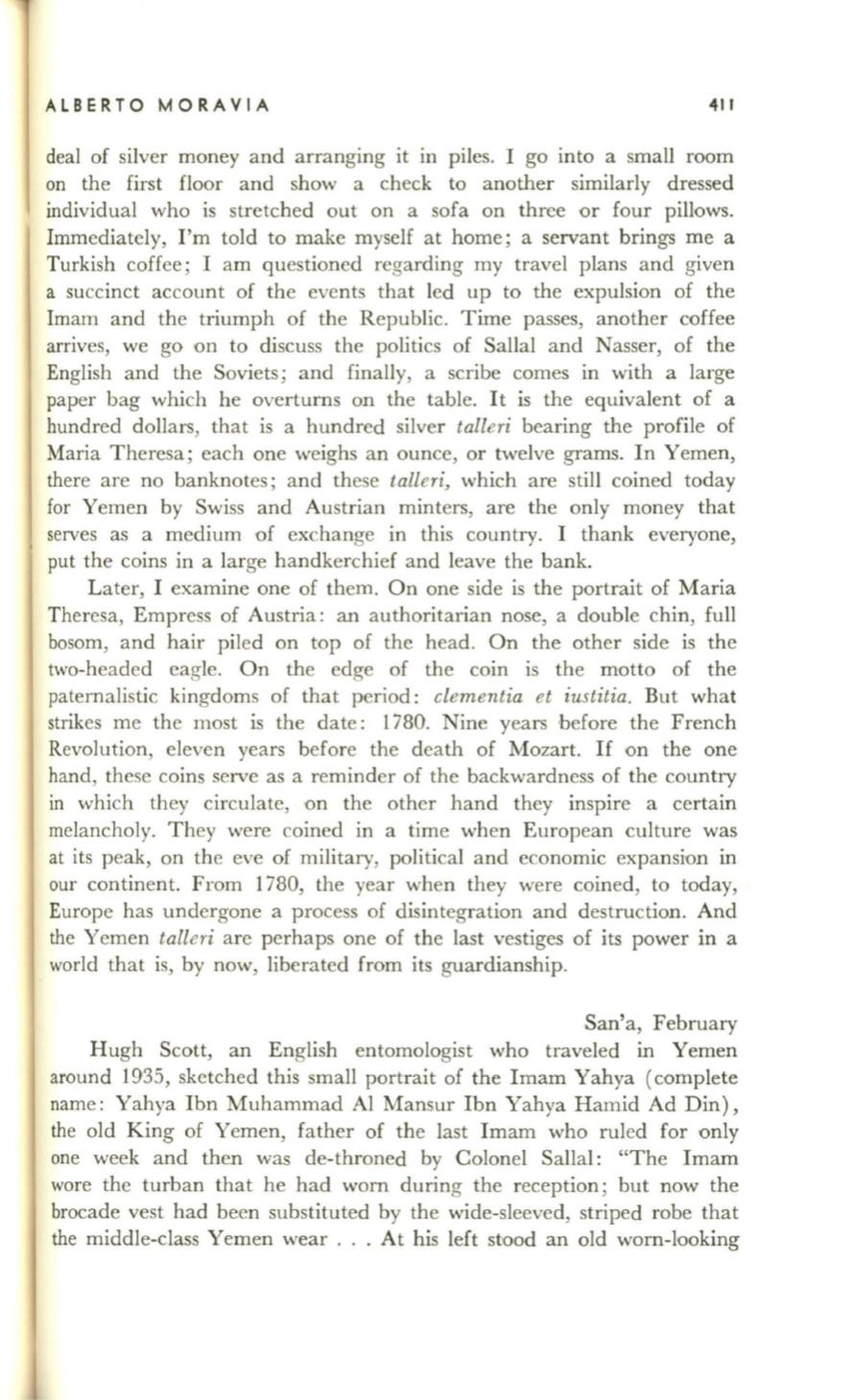
ALBERTO MORAVIA
411
deal of silver money and arranging it in piles. I go into a small room
on the first floor and show a check to another similarly dressed
individual who is stretched out on a sofa on three or four pillows.
Immediately, I'm told to make myself at home; a servant brings me a
Turkish coffee; I am questioned regarding my travel plans and given
a succinct account of the events that led up to the expulsion of the
Imam and the triumph of the Republic. Time passes, another coffee
arrives, we go on to discuss the politics of Sallal and Nasser, of the
English and the Soviets; and finally, a scribe comes in with a large
paper bag which he overturns on the table.
It
is the equivalent of a
hundred dollars, that is a hundred silver
talleri
bearing the profile of
Maria Theresa; each one weighs an ounce, or twelve grams. In Yemen,
there are no banknotes; and these
talleri,
which are still coined today
for Yemen by Swiss and Austrian minters, are the only money that
serves as a medium of exchange in this country. I thank everyone,
put the coins in a large handkerchief and leave the bank.
Later, I examine one of them. On one side is the portrait of Maria
Theresa, Empress of Austria: an authoritarian nose, a double chin, full
bosom, and hair piled on top of the head. On the other side is the
two-headed eagle. On the edge of the coin is the motto of the
paternalistic kingdoms of that period:
clementia et iustitia.
But what
strikes me the most is the date: 1780. Nine years before the French
Revolution, eleven years before the death of Mozart.
If
on the one
hand, these coins serve as a reminder of the backwardness of the country
in which they circulate, on the other hand they inspire a certain
melancholy. They were coined in a time when European culture was
at its peak, on the eve of military, political and economic expansion in
our continent. From 1780, the year when they were coined, to today,
Europe has undergone a process of disintegration and destruction. And
the Yemen
talleri
are perhaps one of the last vestiges of its power in a
world that is, by now, liberated from its guardianship.
San'a, February
Hugh Scott, an English entomologist who traveled in Yemen
around 1935, sketched this small portrait of the Imam Yahya (complete
name: Yahya Ibn Muhammad Al Mansur Ibn Yahya Hamid Ad Din),
the old King of Yemen, father of the last Imam who ruled for only
one week and then was de-throned by Colonel Sallal: "The Imam
wore the turban that he had worn during the reception ; but now the
brocade vest had been substituted by the wide-sleeved, striped robe that
the middle-class Yemen wear ... At his left stood an old worn-looking


